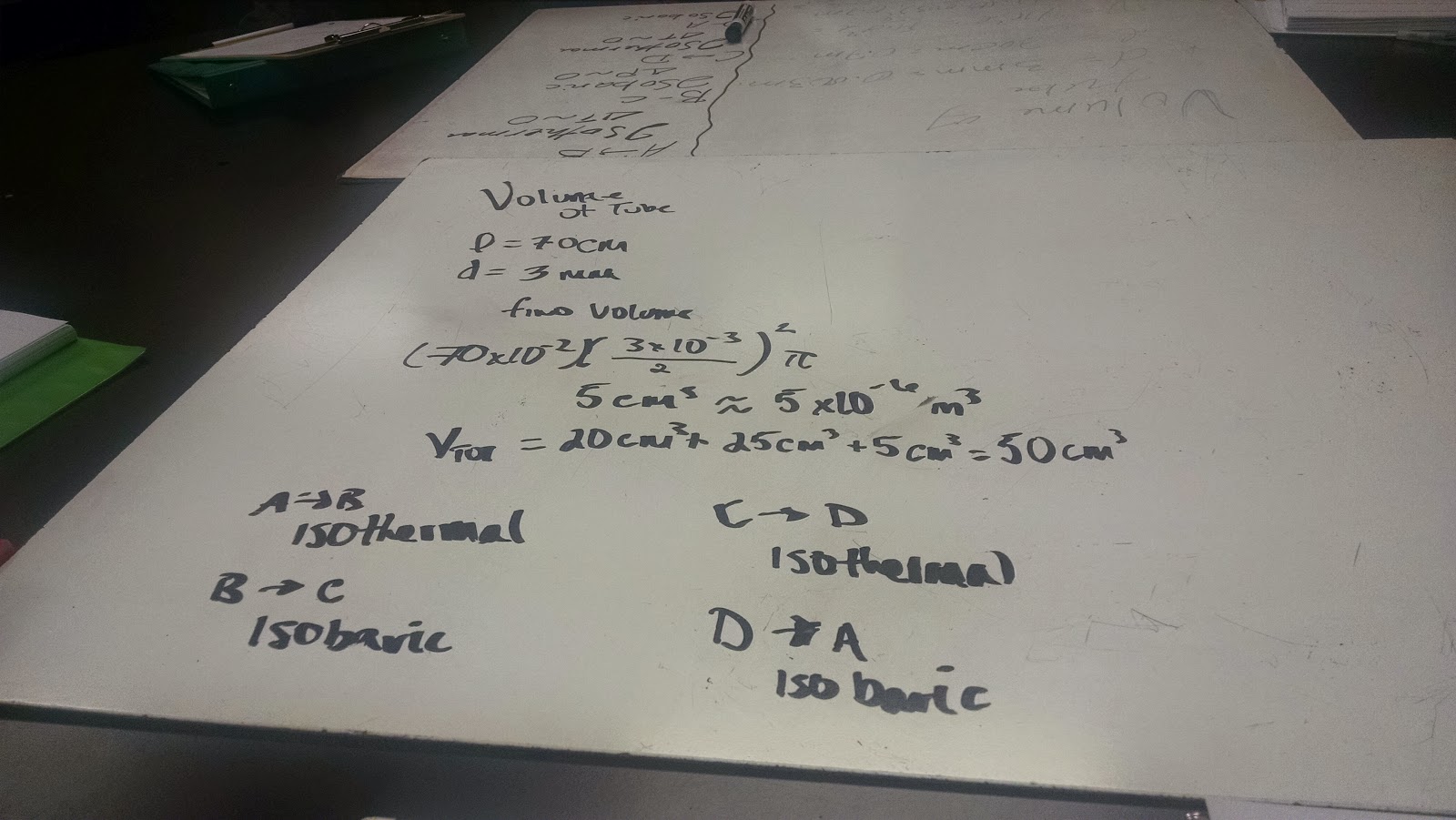In Class Activity:
 |
| A picture of our experiment |
In the beginning portions of the lab, we take a simple engine, one side with cold water, and one side with hot water, and observe what the engine does. We predicted that this is a very simple method of creating an engine, as energy will flow from the hot reservoir (hot water) into the cold reservoir.
 |
| A video of the engine spinning counterclockwise |
As our predictions stated, the engine span in a counterclockwise direction. (It is to note that the water was not hot enough for it to spin normally, so we had to heat it up using a lighter)
We were then asked the question, what would occur if we were to flip the hot and cold reservoirs. Our group predicted that the engine would flip flop as well, spinning clockwise
 |
| A video of the engine spinning clockwise |
Once again, our prediction were correct, as the engine spins clockwise, as the video shows.
We then went additionally as to what would happen if we connected the engine to a wire and let electricity flow. We stated that since electricity works in a way similar to heat engines (flowing from positive to negative as opposed to hot to cold) that it will still spin
 |
| A video of the engine connected via electricity |
Once again, as our prediction stated, the electricity flow allowed the engine to work in a different scenario.
The Incredible Mass Lifting Machine
 |
| Our next setup of our lab |
The Incredible Mass Lifter Heat engine, our next experiment, is a system in which we test a mass of around 1kg, and place the environment at certain pressure, volume, and temperature, to observe changes on the system.
 |
| Our calculations and predictions on the heat engine (bottom) |
We were asked about what kind of process occurs to the system during certain points, in which we explained were either isobaric or isothermal depending on what value was being changed.
Our observation from each points of the mass lifting machine were as follows:
Our observation from each points of the mass lifting machine were as follows:
At point a→b, we observed the mass going down, which is what we predicted would occur (isobaric)
At point b→c we observed the volume increase (thereby pressure decreased) as we placed the "can" into the hot reservoir, which is what we predicted were to occur (isothermal)
At point c→d we observed the volume increase more as the weight was removed, since there was now nothing holding the tube down, which is again what we predicted.
At point d→a we observed that the volume, once placed into the cold reservoir, went back to its initial position, meaning an nothing, if not an insignificant amount of air was lost during the experimentWe can also state that the pressure should be the same since the cycle has returned back to normal, and the gas is in the same state as it was initially.
Determining Pressures and Volumes:
 |
| Our calculations on the cylinder (top) |
We were asked to find the volume of a cylinder with diameter d and length L
We found that to be V = π(d/2)^2 l
 |
| Our calculated answers |
We then took our data that we obtained from before, and plugged it into a chart to look at the scenario with numbers.
As predicted, the pressure of the last step is around the same as the pressure in the first step, since everything was placed back into their initial positions. Steps 1 to 2 and steps 3 to 4 are seen to be adiabetic, since the system is going to fast for it to stay at a constant temperature, while steps 2 to 3 and 4 to 1 are isobaric, as only temperature and pressure were seen to change (caused due to the weight being placed on the system)
Adiabetic Expansion Activity:
In this portion of the lab, by using the ideal gas law, we needed to prove the relationship between moles and temperature to the change of volume, volume, change of temperature, temperature, and R (Cp - Cv)
 |
| Our entire calculations of the procedure |
Additionally, we needed to use the proof we had in order to find the relationship between temperature and volume during an adiabetic process. Since we already had the proof proven in the previous photo, we skipped a few steps in order to speed up the process.
 |
| Calculations of said relationship between temperature and volume |
Work in an Adiabatic Expansion:We then discussed about finding work in an adiabatic expansion, using the equation that W=(integral of) Pdv


No comments:
Post a Comment